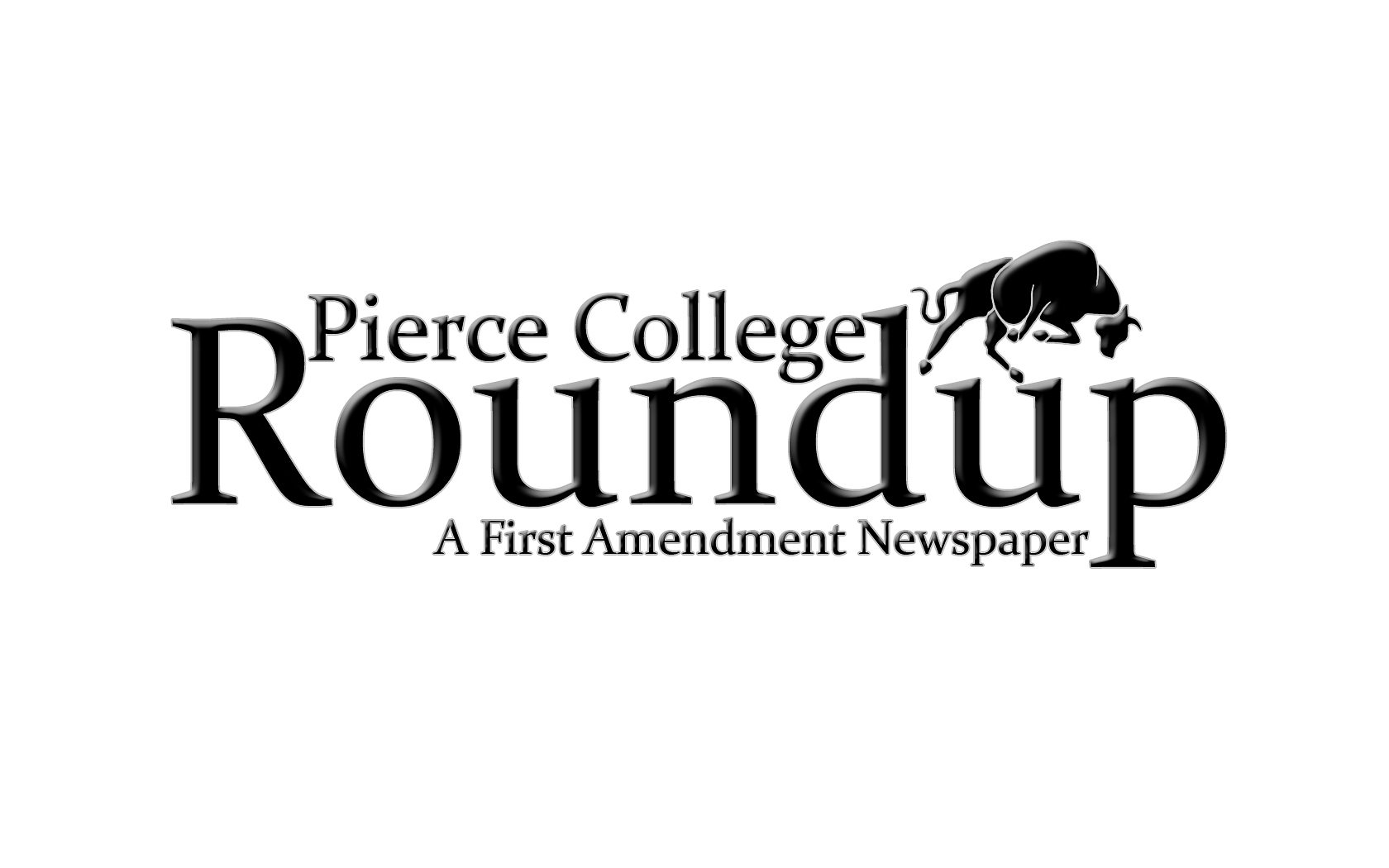Erika Monteleone, 25, can’t take as many classes as she wants each semester because she can’t afford to pay for them.
“I haven’t even paid off the classes I’m in right now,” she said. “I don’t know how I’m going to register for courses next semester.”
On top of paying her tuition and books, Monteleone, who is in the Registered Veterinary Technician Program, has to pay off the student loans she received as a vocational school student before coming to Pierce College.
She ended up defaulting on her loans—which renders her ineligible for federal financial aid—after she says she found out that her school was stealing the money.
According to Monteleone, the school used $9,000 of her loans and stole $13,000 of her Cal Grants.
“It scared me away from going to school when I found all this out,” she said.
Even as a part-time student, Monteleone is having difficulty paying for necessities in classes. She says she even failed her medical terminology class because she didn’t have the book with her.
On top of being a student in debt, Monteleone is a single mother of a 2-year-old boy. When he was still living with her—until the beginning of the semester—she had to take care of him on her own.
She moved out to Los Angeles to live with her father, who was supposed to take care of her son while she was attending school.
“He decided to change his mind,” she said.
Because she had to take care of her son after he got out of day care, she can only take courses at certain times each week.
“I got lucky with the classes I got,” Monteleone said. “If I didn’t get into the ones that fit my schedule I wasn’t going to be able to go to other classes.”
Monteleone is one of around 30,000 yearly students at Pierce that is affected by cuts to education in the Los Angeles Community College District: raised fees per unit, significant cuts to courses, and the resulting drop in enrollment.
The recent passage of the governor’s tax initiative, which partly benefits higher education across the state, helps alleviate the district’s decreasing finances.
General situation:
Following the passage of Proposition 30, which temporarily increases income tax on high earners and sales tax for seven years, the district will receiving $15 million in deferral relief and $3.9 in growth, according to the Final Budget for 2012-13 from the Office of the Chancellor.
Despite this, the district still has a $35 million shortfall in base revenue from this fiscal year.
For the 2011-12 fiscal year, the district has faced over $46.4 million in cuts, according to documents provided by the LACCD Chief Financial Office. This totals to approximately 10 percent of the district’s revenue.
The final budget submitted by former Chancellor LaVista to the district’s board of trustees for approval reflects a total of $3.47 billion.
What it means for Pierce
Pierce will be adding between 100 to 125 class sections between the summer intersession and spring semester, according to Kathleen Burke-Kelly, the college president.
In line with this, the college will have more seats for enrollees next year.
The process of adding sections is only in its planning stage, according to Burke-Kelly. Through shared governance, the school’s recommending bodies are waiting for proposals from their sub-committees, like scheduling advisory and resource allocation.
After the academic senate and college council go through recommendations, they will proceed to offer solutions to the president.
“In the end the decision comes to me,” she said.
Burke-Kelly added that additional revenue from Proposition 30 is specifically restricted from being used for administrative costs, like the cancelled cadet program.
“They really have to be frugal on services. The money goes directly to students,” she said.
She does say that the line between administrative and educational costs tends to be blurry.
“Part of the problem with the Educational Protection Act is that it doesn’t have a complete definition of what’s allowed and not allowed,” she said.
Cuts to each college
Budget slashes for each college under the LACCD are based on the school’s enrollment, or full time equivalent students—affected by the number of courses offered in a college.
Additionally, the schools have control over the specifics of the programs and entities they will be sacrificing in order to balance their budgets. This is also applied when the district gets additional funds, according to Vinh Nguyen, director of budget from the LACCD chief financial office.
The district, which is maintained through state funding, lays out its financial plan following the California budget. Information on the estimated percentage to be taken out of the revenue is then given to the administration of each campus, where recommending bodies such as the college council and its sub-committees put forward solutions to balance the budget.
“We try to give as many classes to students, but it also has to do with being fiscal stewards,” said Rolf Schleicher, co-chair of the Pierce council budget committee. “We’re trying to make smart choices.”
Pierce—the third largest campus in the district—has faced the third largest revenue loss, following Los Angeles East College and Los Angeles City College. Since 2009, Pierce has had to cut $10,525,962, according to documents.
“We’re trying to reduce all possible expenditure we can cut,” Nguyen said. “The issue is that over the last two to three years, we’ve been cutting. There aren’t too many areas to make cuts to anymore.”
District’s reserve
The LACCD maintains a monetary supply comprised of two reserves: the district general reserve—5 percent of the total balance—and a contingency reserve, which amounts to 7.5 percent of the district revenue.
The money is set aside to “ensure the District’s financial stability, to meet emergency situations or budget adjustments due to any revenue projection shortfalls during the fiscal year, and so that the District shall not be placed on the State ‘watch lists,’” according to the 2012-13 allocation mechanism for the final budget.
While the money in the contingency reserve may be used for crises, the general reserve cannot be used throughout the year.
“It’s just to protect the district from running under,” Nguyen said.
Any use of the money must be approved by the district’s governing board with a supermajority vote, he said.
The Pierce reserve
Pierce is one of two colleges in the district—the other being East Los Angeles College—that keeps a reserve from money set aside from pervious years.
“Colleges keep the generated balance they have [after allocating revenue],” Nguyen said.
Since the balances are part of the district’s overall reserve, a portion of the money in both the general and contingency “belongs to the college reserves,” according to Nguyen.
“In a sense it’s saved by us, and in another sense, it’s all the district’s resources,” said Burke-Kelly.
Because of this, the school does not have control over all the money in left in their balance.
Though each college gets revenue from the district based on its size and FTES, they differ in their expenditure levels.
“Some colleges spend more than others,” Nguyen said.
The Pierce reserve, which used to be $9 million, has $5 million left over after Pierce loaned money to the district, Schleicher said.
“It’s our intention to get it back,” he said.
Each fiscal year, as more money from the revenue is needed to keep up operations on campus, the college has less money left in the reserve to start out with, according to Schleicher.
Part of the money in the reserve also comes from the school leasing some of its property, such as the parking lot by the Metro Orange Line Pierce College stop, according to Don Sparks, budget committee member.
Toward the beginning of the semester, a resolution was passed and approved to the college president by the Pierce College Council to ask that the district give the interest made by each college reserve to the corresponding school.
“It was pointed out that all the district’s money gets held in the county treasury, and it makes interest,” said Sparks, who proposed the resolution during a council meeting. “The interest should go to the college.”
The proposal doesn’t just affect Pierce, but any college that generates reserve and interest, Sparks said.




